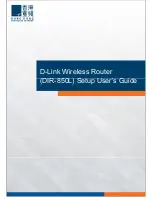
AR24027
Operator’s Manual
4-1
4
COMMANDS
4.1
Configuration techniques
There are three ways to configure the radio. One uses the auxiliary port at the bottom of the unit and
consists of an asynchronous RS-232 link used for issuing configuration commands and monitoring
the local radio status and performance. This port is always set to operate with the following
parameters:
Baud rate: 9600
Word length: 8 bits
Parity: none
Stop bits: 1
This console port allows configuring and monitoring only the local radio, i.e. you can not monitor and
configure any of the remote radios reachable through RF.
A second configuration method uses the Ethernet connection to the radio to perform the
configuration. This approach has the advantage that any radio reachable across the Ethernet, or the
RF link, can be configured from a single PC. Additionally the Ethernet connection is more readily
available indoors than the console port.
In order to use the Ethernet connection to configure the radios the “Ethernet Console Program”
(Econsole) needs to be installed at a PC. This PC must be connected to the LAN where one or more
AR24027
are connected. From this PC it is then possible to configure not only the radios directly
connected to the LAN, but also any other radios reachable through one or more RF hops. Refer to
Appendix D for instructions on the installation of Econsole.
The third configuration method is using Telnet from a remote location. Telnet is explained in more
detail in section 5.
After power up the radio performs several diagnostic and calibration tests. At the end of these tests it
outputs the command prompt. The default prompts are:
rmt-nnnnn #> (for a remote radio in a PmP topology)
hub-nnnnn #> (for the hub radio in a PmP topology)
where nnnnn are the last five digits of the radio serial number. If a node “name” has been assigned to
the node, the prompt will be that name.
The “help” command provides a list of all the commands available. To get more detailed help for a
specific command, type “help command-name”.
The radio keeps a history of several of the previously issued commands. Those commands can be
viewed by pressing the up-arrow and down-arrow keys on the keyboard. Any of those previously
issued commands can then be edited and reentered by pressing the <Enter> key.
Содержание AR24027
Страница 5: ...AR24027 Operator s Manual iv ...
Страница 15: ......
Страница 25: ......
Страница 41: ......
Страница 61: ......
Страница 76: ...AR24027 Operator s Manual 6 11 Figure 6 3 Free Space Path Loss at 2 4 GHz ...
Страница 85: ...AR24027 Operator s Manual B 2 ...
Страница 87: ...AR24027 Operator s Manual C 2 ...
Страница 93: ......
Страница 96: ......
Страница 98: ......
















































